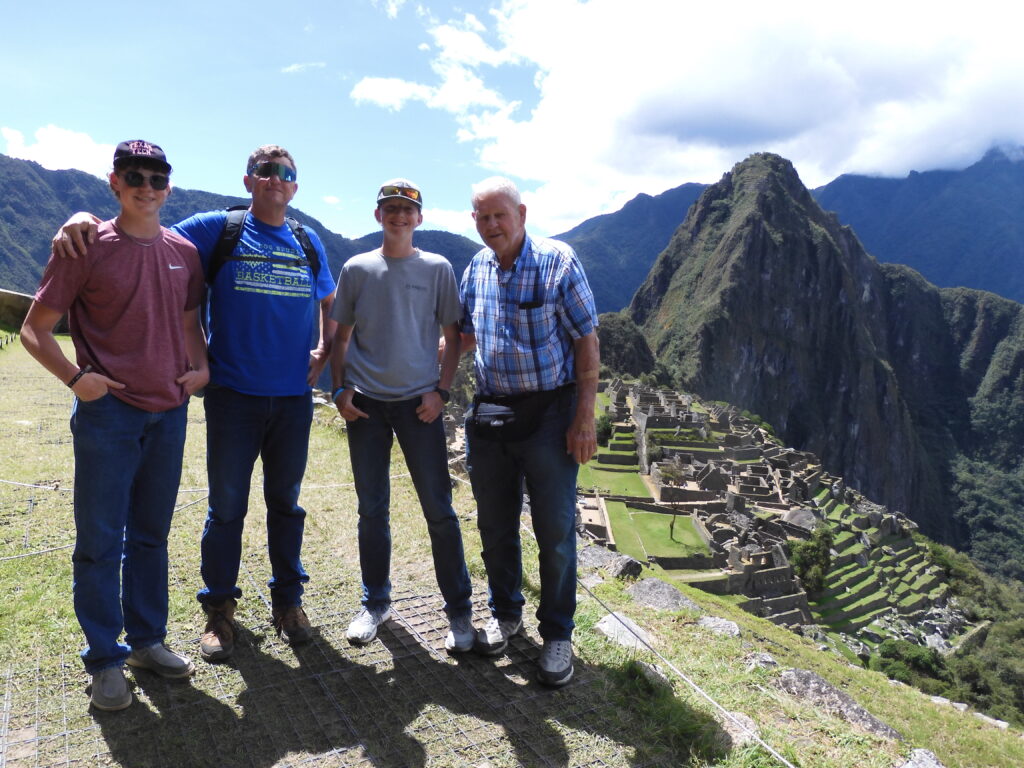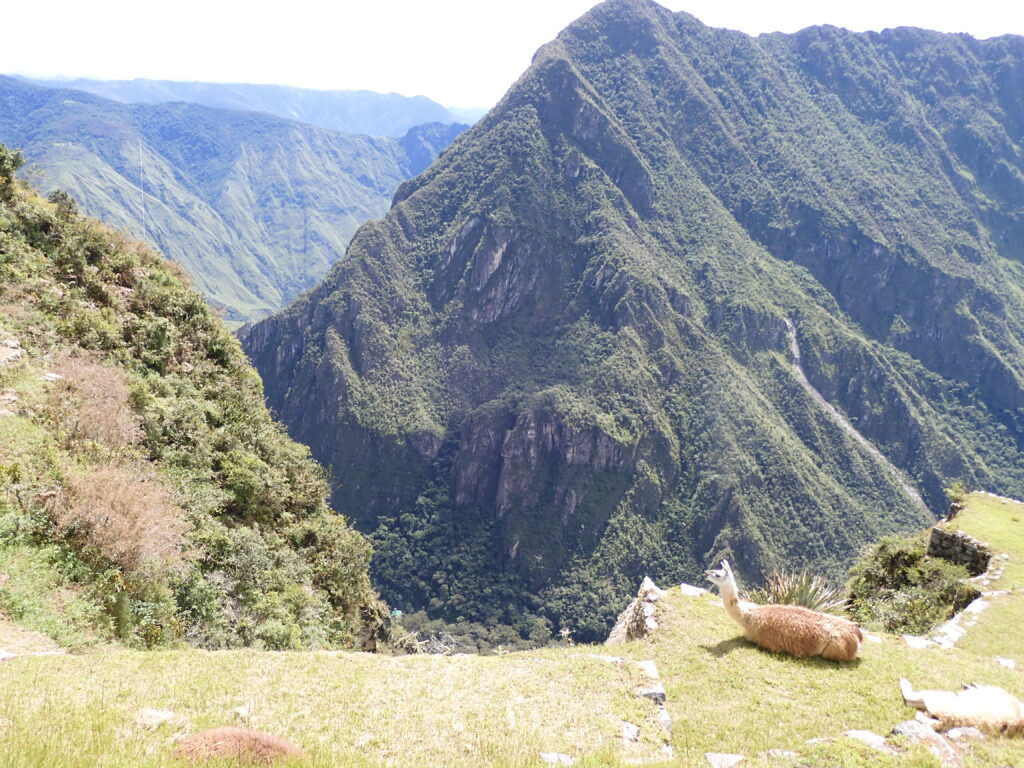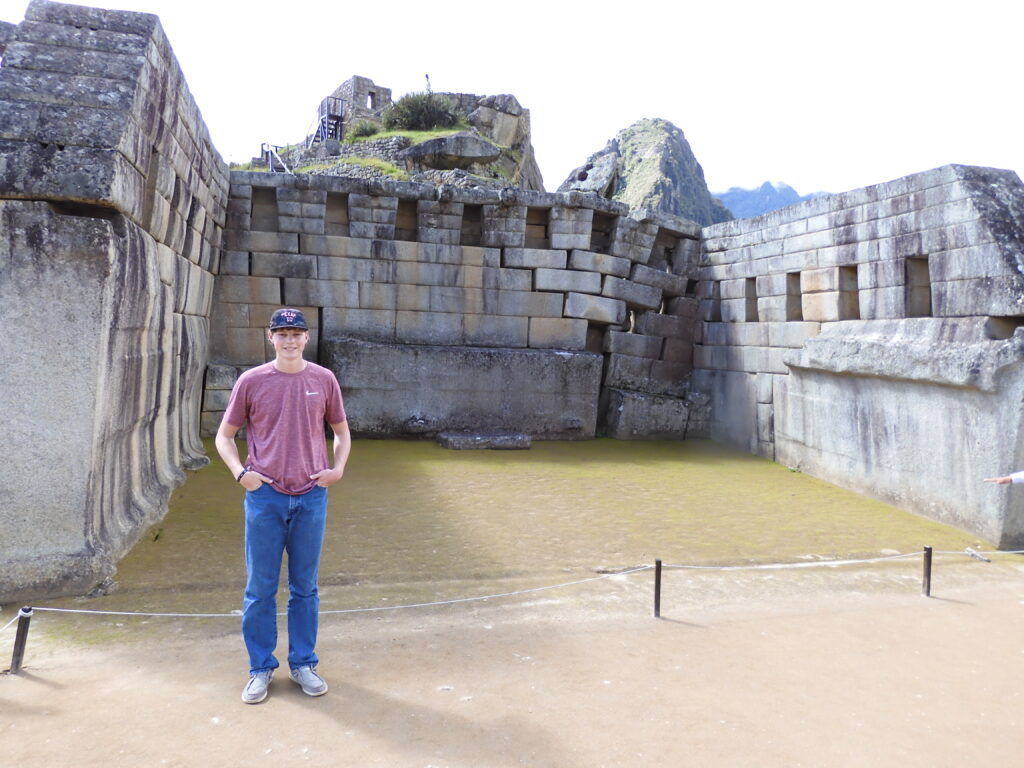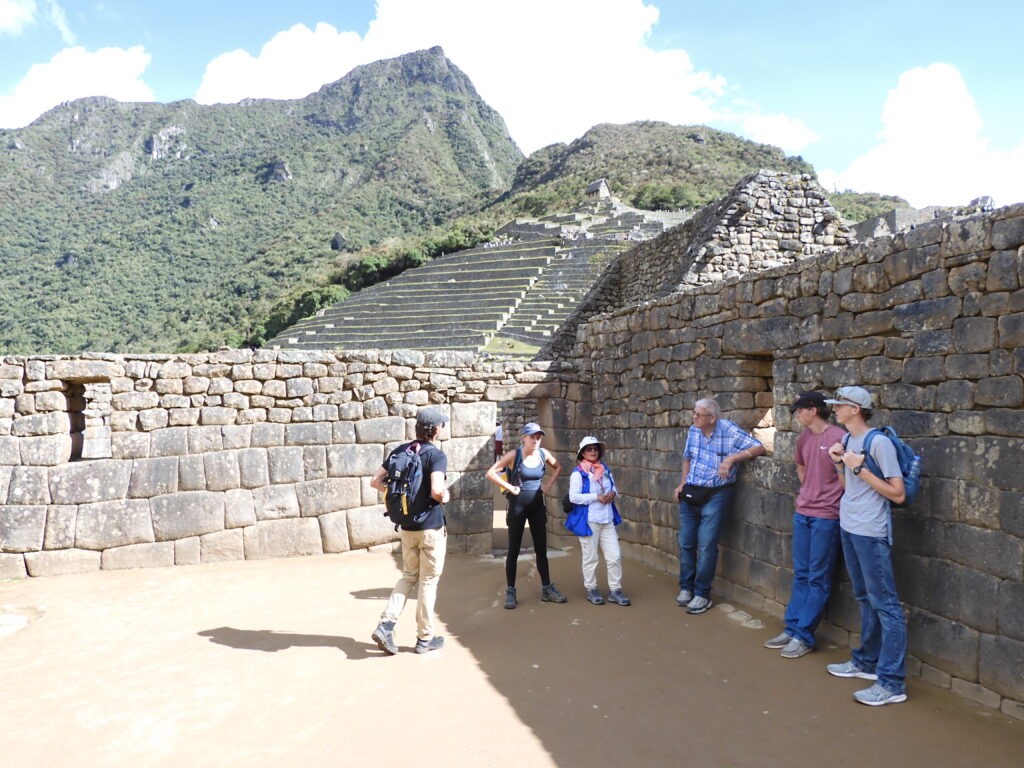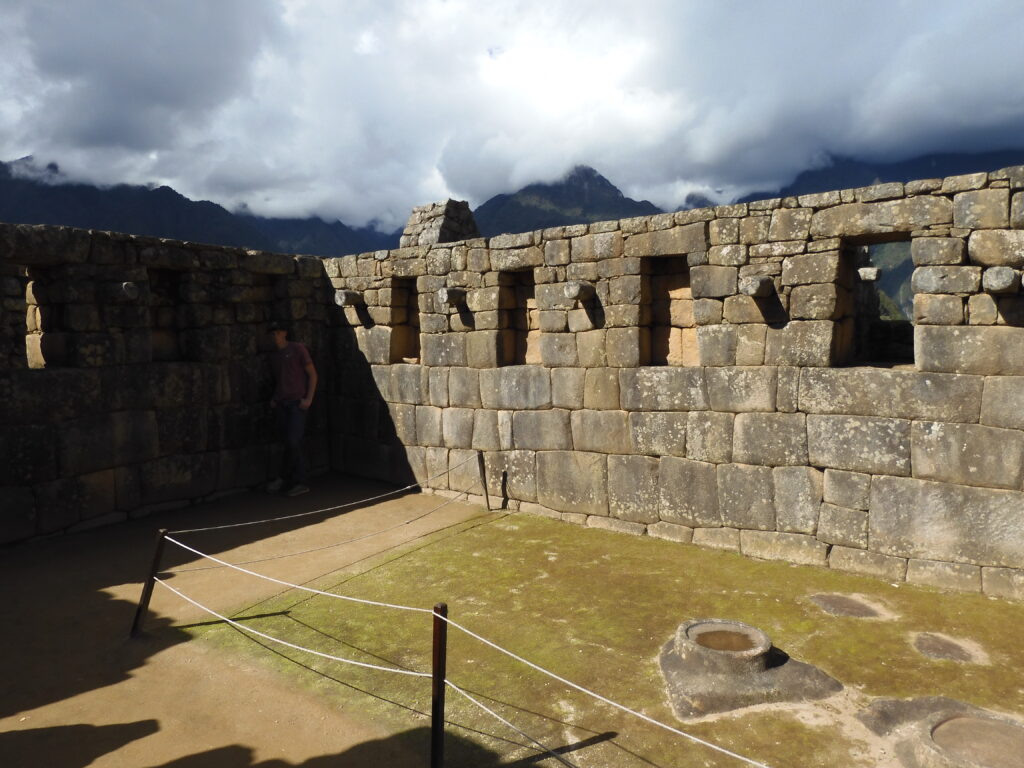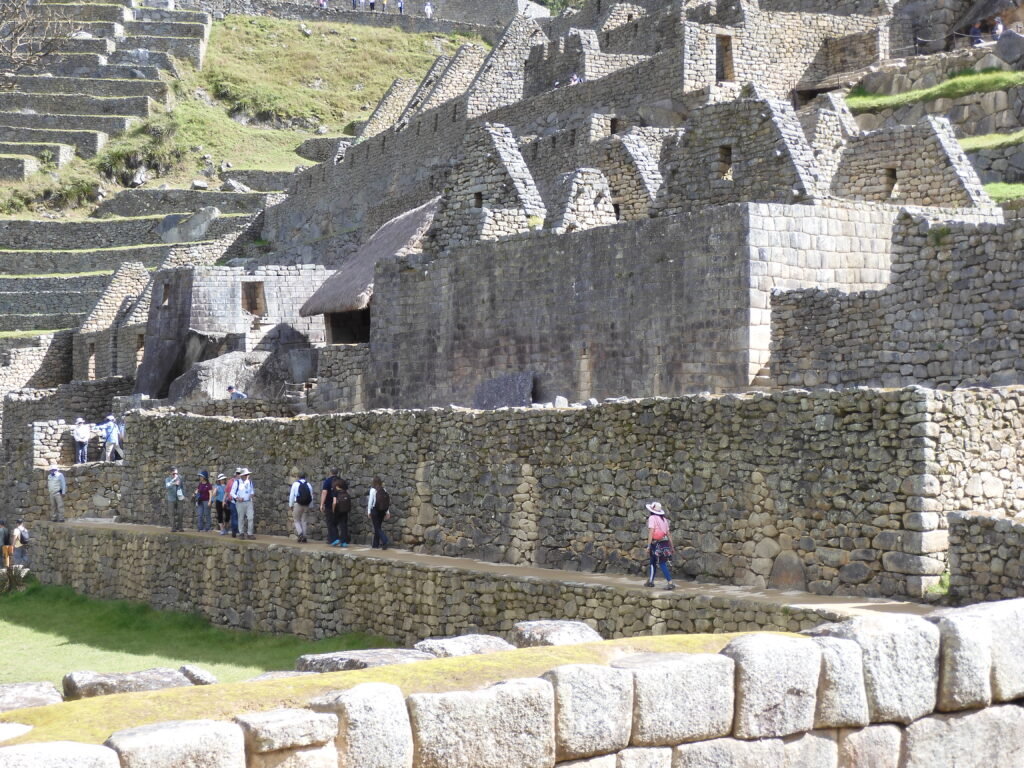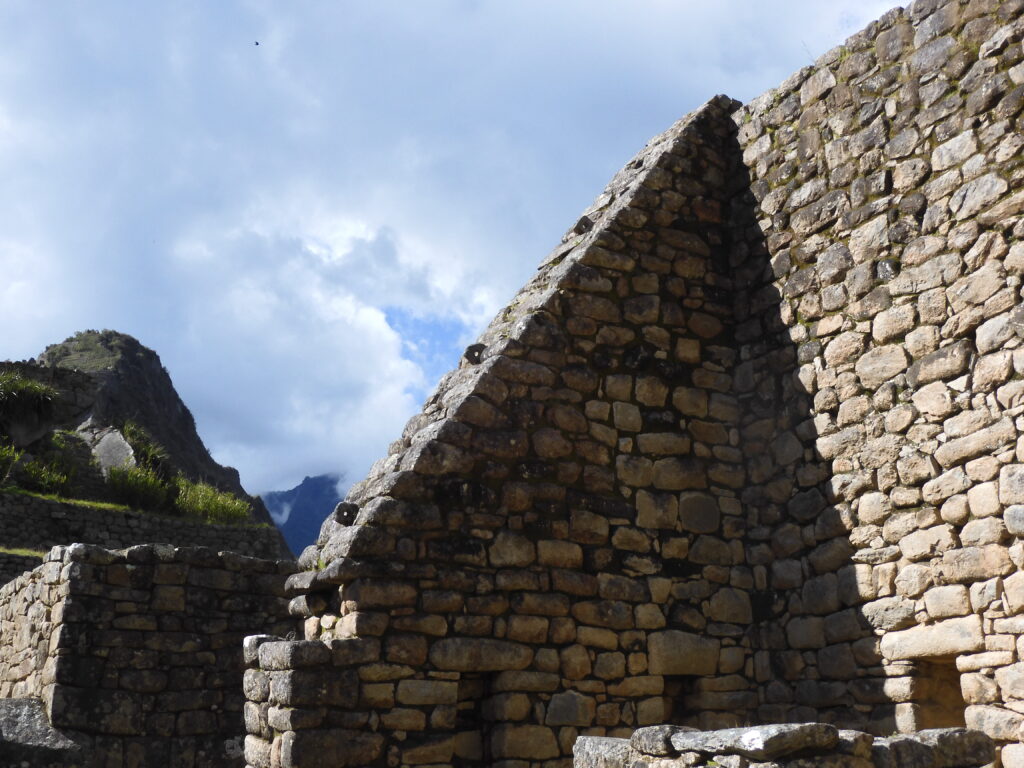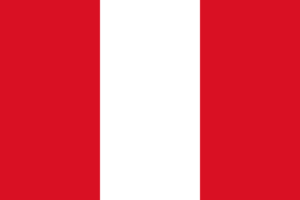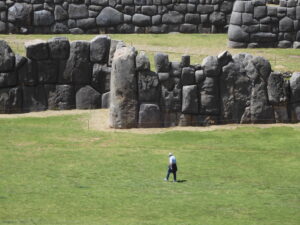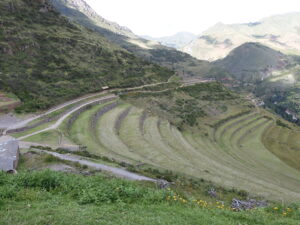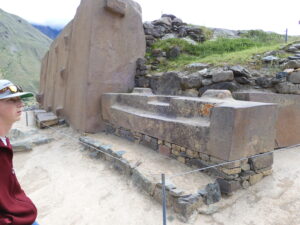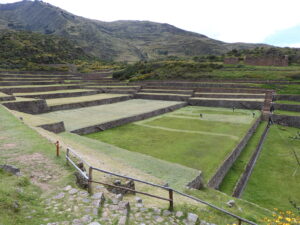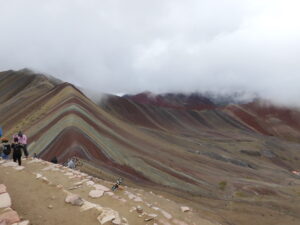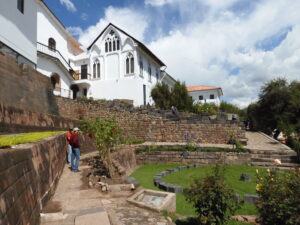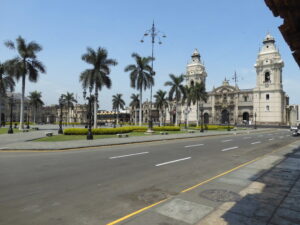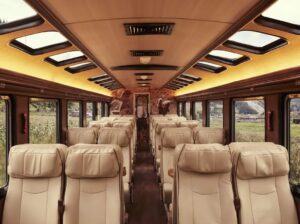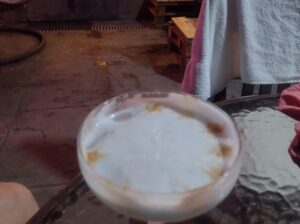Machu Picchu
This is the Reason We Came
Machu Picchu was the crown jewel of our voyage to Peru, the inspiration for our trip. Because we had to book the tickets months in advance, it was the event around which the rest of the trip was built. At just under 8,000’, Machu Picchu is lower than Cusco or any of the other major Inca cultural sites. Many advisors recommend visiting Machu Picchu after spending several days in Cusco, so as to be fully altitude acclimated prior to this important tour stop. The altitude at Machu Picchu was a non-issue for us since we camp regularly in the U.S. at similar elevation. Vinicunca (the Rainbow Mountain) on the other hand sits closer to 17,000’, and the sites near Cusco are close to 12,000.’ None of us suffered altitude sickness symptoms on our trip, but I believe the elevation did play a significant part in my dad’s fatigue and irritability documented in previous articles. Climbing Vinicunca the day after arrival at Cusco would be a bad idea.
Travel around Peru helps one understand the concept of the “tyranny of distance.” I usually prefer renting a car and seeing the country at my own pace, especially when traveling with others. But the drive from Lima to Cusco requires 24 hours over difficult roads to traverse less than 700 miles. It takes several hours and three modes of travel to get from Cusco to Machu Picchu. Tours often squeeze that into a day trip. For us, this would have been a tragic mistake. An hour and a half bus ride brings you from Cusco to Ollantaytambo, where you board a train for about the same amount of time to Aguascalientes (or Machu Picchu village). Another half an hour bus trip takes you up the final switchbacks to your destination. Reversing that route after spending any meaningful time at Machu Picchu would have been an absolute death march. We hired a car to drive us to Ollantaytambo via some smaller sites before catching the train to Aguascalientes the afternoon before our MP ticket date. We did take an evening train/bus back the day of our visit. If I had it to do over, I would have stayed two nights in Aguascalientes sandwiched around our MP time. This would have made our visit more relaxed for my dad’s sake.
Most MP tickets require you to commit to one of four defined circuits through the archaeological site. A couple of optional add-ons allow you to hike up one of the two mountains behind the ruins to get an iconic photo from far overhead. These hill climbs require you to take archaeological site circuits that miss many of the most desirable highlights of the pre-hispanic city. Entry times are controlled, and your time in the site is limited to a few hours. My solution to this problem was to purchase two tickets apiece for each of us. I bought 8:00 tickets for circuit 4 including the Waynapicchu climb, and 13:00 tickets for circuit 2 which includes many more of the important and interesting features of the ancient city. This program worked well. The Waynapicchu climb was strenuous, and best undertaken in the morning. After traversing the lower parts of the archaeological site and making the climb, we had roughly an hour for lunch before reentering for a more comprehensive tour of the cultural site.
July and August are high season at Machu Picchu. This is also the dry season in the Peruvian Andes. We visited during American Spring Break, right at the end of the rainy season. Our shoulder season visit reduced the prices and traffic a bit for us, and ensured that the foliage would be a brilliant and vibrant green. It can apparently drift toward yellows and browns by the time most tourists arrive. We risked encountering clouds or rain, and were rewarded with peak foliar beauty. Fortunately, we had “chamber of commerce” weather on our Machu Picchu tour day. So while we were a little lucky, we did get to see not only the spectacular ruins but also the full splendor of Machu Picchu’s physical geography.
It seems like it would be hard to be surprised by the beauty and grandeur of a much ballyhooed site like Machu Picchu. It is often the lesser-known sites that offer surprises and surpass expectations. One foggy winter day in the San Joaquin Valley, the kids and I decided to escape the sunless gloom by heading to Sequoia National Park, home of the General Sherman Tree – the world’s largest living organism. When I asked the kids afterward what they thought about it, Andrew replied, “I thought it would be bigger.”
Even so, Machu Picchu surpassed all of our expectations. Everyone has seen the standard photos of the ancient city – a vista achieved by making the hike up Waynapicchu or Huchuy Picchu. But it is the full splendor of the surrounding mountains and valleys that gives Machu Picchu the glory that can only be truly experienced by visiting the site. The terrain rises so sharply from the valley below, and towers above the city itself so starkly, its seclusion from outsiders for nearly four centuries becomes understandable. (Continued)
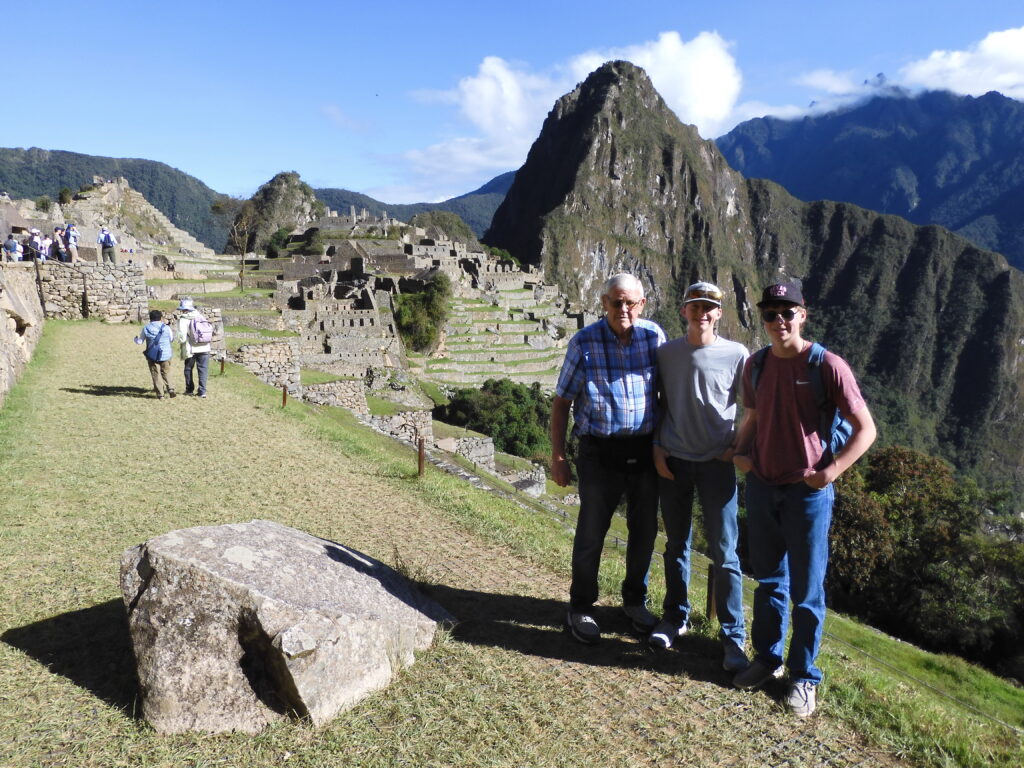
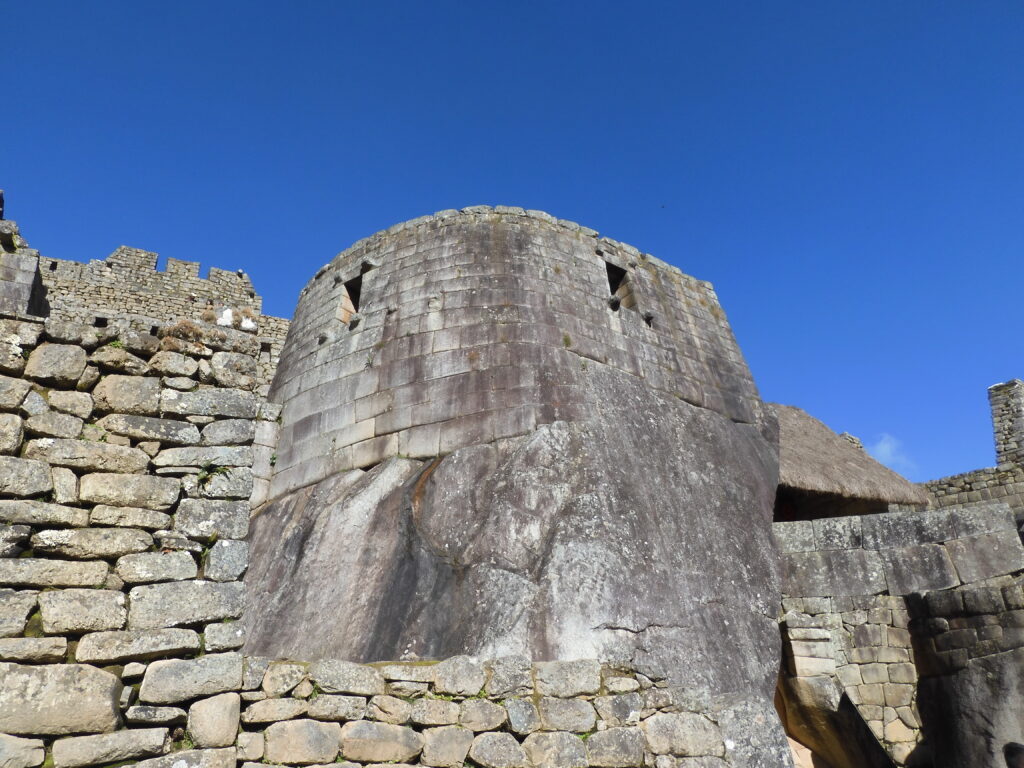
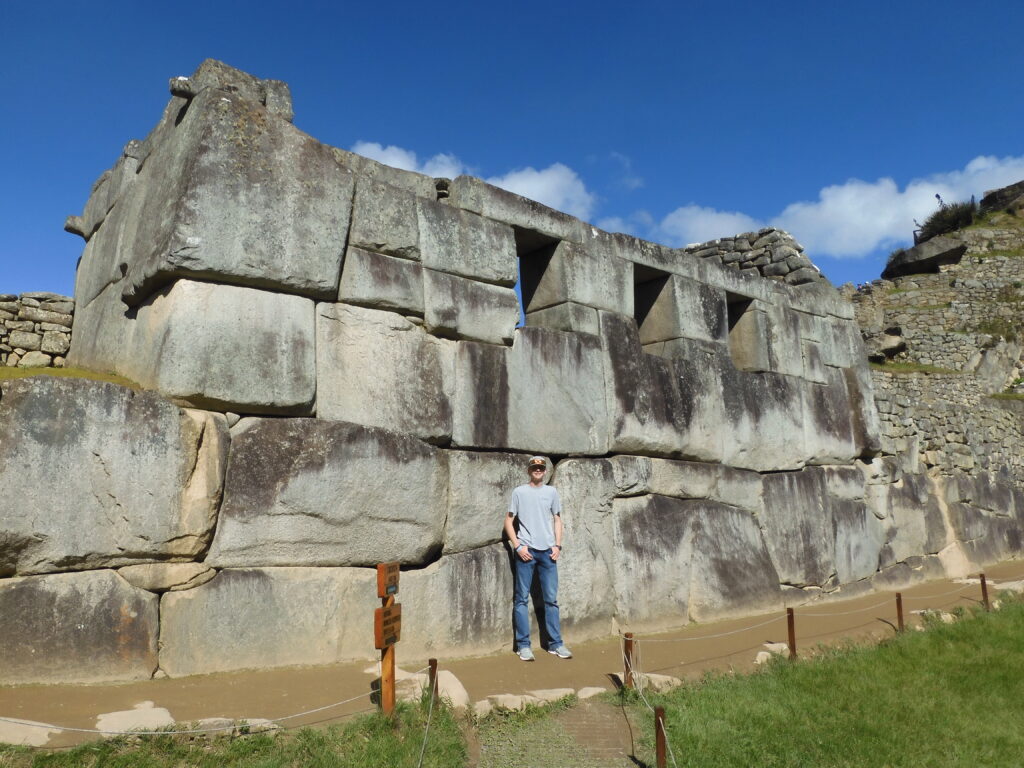
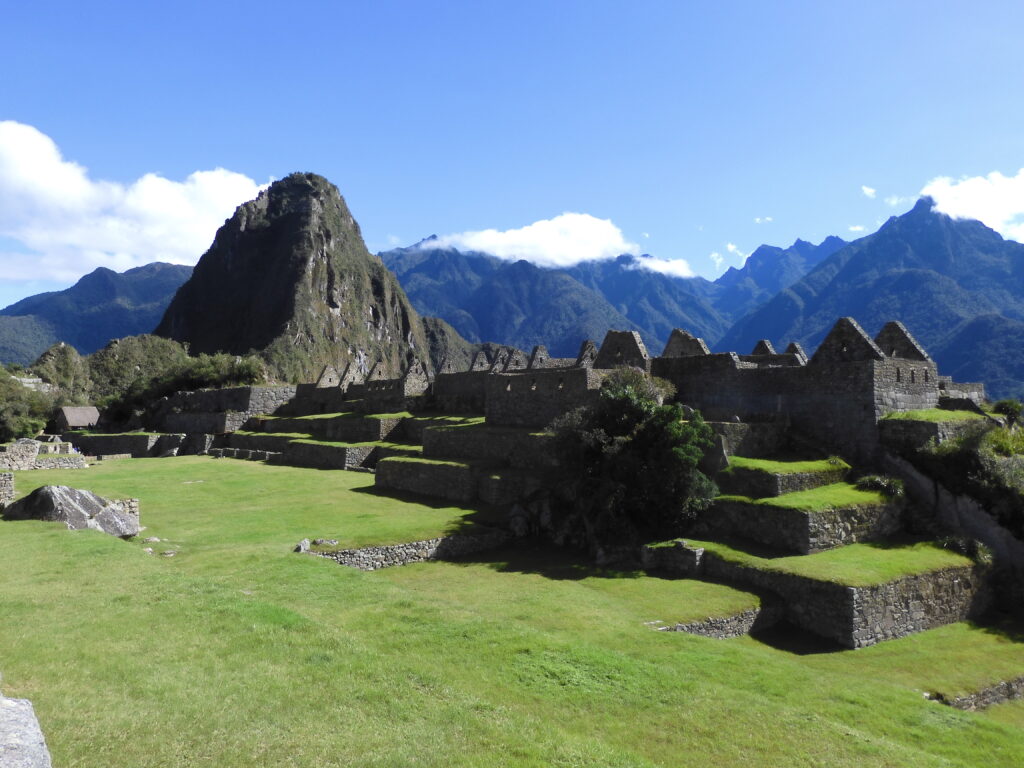
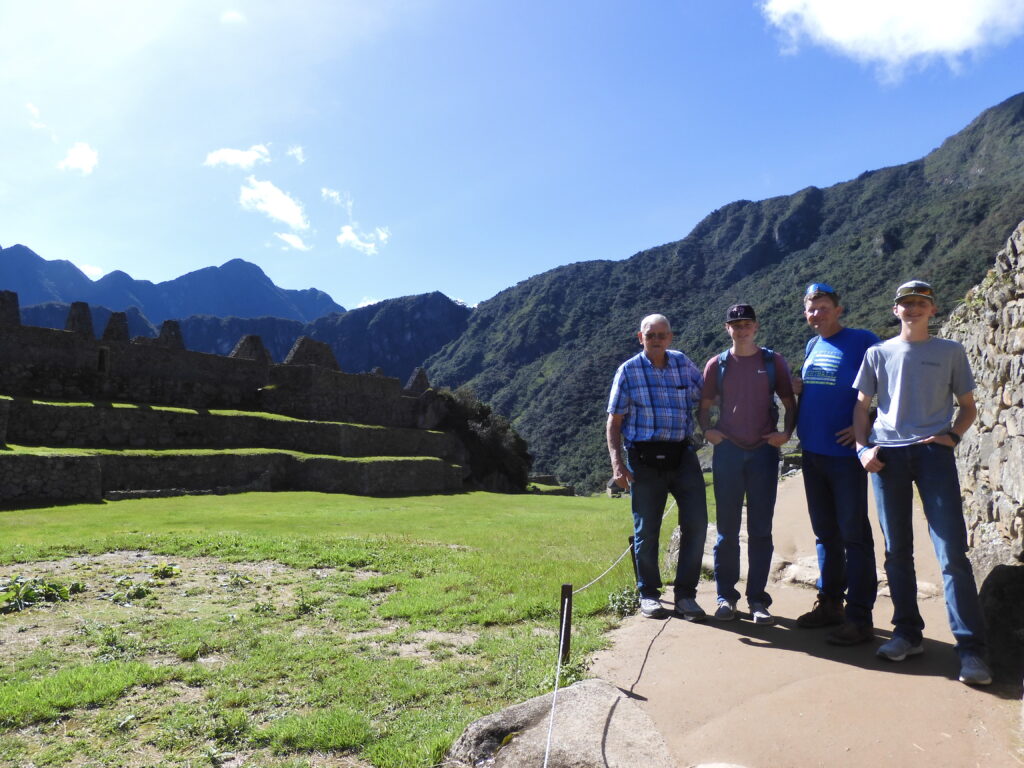
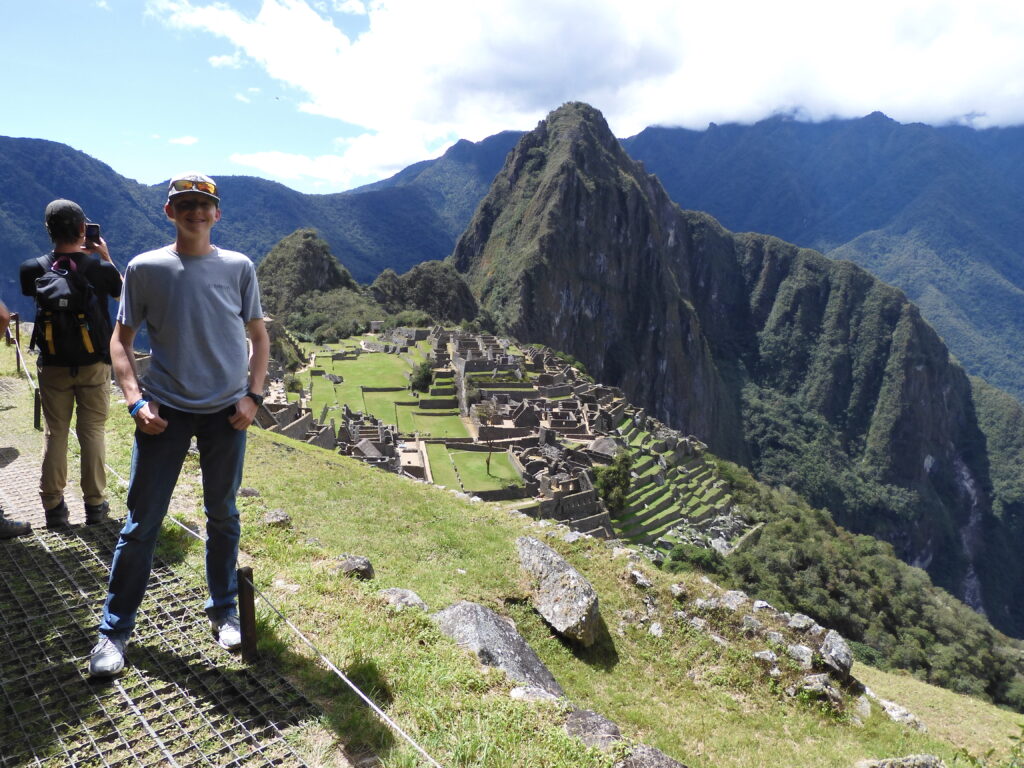
There are two train companies offering service to Aguascalientes from Ollantaytambo, Inca Rail and Peru Rail. Peru Rail is slightly less expensive, and Inca rail is slightly fancier, but both trains offer similar experiences with plenty of windows on both sides of the car to witness the fabulous scenery passing by. The trains can run behind schedule and make significant stops on the side-tracks to allow opposite direction trains to pass. Since trains leave about hourly throughout the day for Aguascalientes, I figured I would just buy tickets once we arrived at the station for maximum flexibility. This turned out to be an error, as even during shoulder season, we could find only isolated single seats at that late hour. Our train arrived about an hour after nightfall on Machu Picchu-Eve. The village is small, so we had plenty of time to find our motel, rest briefly, and make our way to a restaurant.
We stayed at Sacred Stone Boutique Hotel. It might not occur to many American travelers to ask whether a room has AC, but this feature should not be taken for granted when traveling internationally. It turned out we did not need air conditioning, which was good since our room was not so equipped. Our room was on the third floor and fronted the Urubamba River. The river was running high which turned out to be a great source of white noise. Our gracious hosts – natives of India – were as kind as they could be. They stored our bags while we toured MP the next day and even loaned us their personal umbrella when we expressed concern about rain in the forecast and our familial aversion to ponchos. When we later learned that umbrellas are not allowed in Machu Picchu, I was petrified that we might lose this nice lady’s umbrella. We checked it with the baggage holders and safely returned it later that afternoon, much to my relief.
I narrowly avoided a self-created disaster for all of us on the day of our MP reservations. I had assumed that like most other highly trafficked tourist destinations in Peru, we could just hop a cab or colectivo from Aguascalientes prior to our 8:00 entry appointment to make the thirty minute ascent. As I lay in my bed the night before our big event, it occurred to me I might ought to investigate the veracity of this assumption. I discovered that one single bus company held a monopoly on transporting tourists up the canyon wall. A quick web search gave me a potential office location and an opening time of 5:00 a.m. So whilst my traveling companions grabbed an extra hour of sleep and consumed their complementary breakfast, I slipped out of the room and hoofed it to the bus station. It turned out the bus company office was not to be co-located with the station. After a brief search, this too was located and I entered to buy tickets for all of us.
“Your passports, sir?” asked the clerk.
“I need passports to buy bus tickets to go just from here to the park?”
“Yes, sir.”
So off I went back to the motel room to collect all four passports. It turned out I needed them for our train tickets back to Cusco as well, which I also acquired in the pre-dawn hours as Preston, Andrew, and my dad munched on fruits, cereals, and cheeses. Nothing is very far from anything else in Aguascalientes, so we had a short walk back to the bus station. By the time we got there, a long line had formed, and the bus attendants were only allowing groups with 7:00 entry times on the buses. Have I mentioned that my oldest son, Preston, is allergic to almost everything one can be allergic to? He had eaten dairy products or something that disagreed with him and felt the need to make an emergency bathroom stop. With line as long as it was, this seemed not to be an issue. With his penchant for cleanliness Preston decided on his own then, that perhaps it would be best just to go on back to our room to relieve himself. With buses leaving every five minutes, the line was proceeding rapidly, but only among those with the earlier entry window. All of a sudden, the bus jockeys ran out of 7:00 a.m. entries and the entire line moved up about 200 yards at once. With fresh buses leaving every 5 minutes, it quickly became apparent Preston was in danger of not making it back in time. No problem, you say, he can just meet you at the entry. Unfortunately, Preston had left his passport and all documents with us! Ok, you say, just text him. Preston purchased a Peruvian sim-card but had been reluctant to complain about it not working properly, so the only way to contact him was via Facebook messenger….when he had a WiFi connection! I made this one desperate attempt. I stood in line with my head in my hands, about to sob in self pity that after all the preparations that had been made and half of the globe had been traversed, I was going to have to get out of line and miss the bus and therefore my entry time for Machu Picchu because Preston ran off without his travel documents and without any way to contact him. He got the message in our room just in the nick of time and ran up to our line just as I was going to have to make the decision to get on the bus or forfeit my position to wait with him at the back of the bus line.
In half an hour, we were at the gate of our prized destination, and all was forgotten. It was a clear, perfect day. There was a touch of humidity in the air as Machu Picchu is a bit more tropical than the Sacred Valley. We made our way through the entry and around the lower parts of the city that make up circuit 4. We enjoyed what we could see from there at an unhurried pace, but with the understanding that our more intense tour would take place after lunch. Eventually, we made our way to another entry booth for the Waynapicchu trail. At this checkpoint, there is a logbook with entry and exit times as well as the age of each hiker. They asked my 73 year old father at that point if he really intended to make the Waynapicchu hike, or if he would rather divert to the far less strenuous Huchuy Picchu. He opted for the smaller mountain, and that was wise. Not only was Waynapicchu rather difficult for a hike of less than a mile, but the footing on the trail was questionable at best. I have yet to see examples of Inca footwear, but from the narrowness of the steps, it has become obvious to me that there never lived an Inca with a shoe size above four. Dad would have had great difficulty getting his 15s on those 4” stairs. It was hard for me at times, but the effort was worth it. The bird’s eye view of the citadel made every slender step of the rocky staircase worthwhile.
The best viewpoint was just below the summit on a ledge with a pleasant sitting area. The summit itself is comprised of uneven boulders swarmed by buzzing insects. Of course, we climbed it to say we made it to the top, but after spending a few minutes perched on the boulders, I returned to the sitting ledge for more photos and the joy and peace of just taking it all in. (Continued)
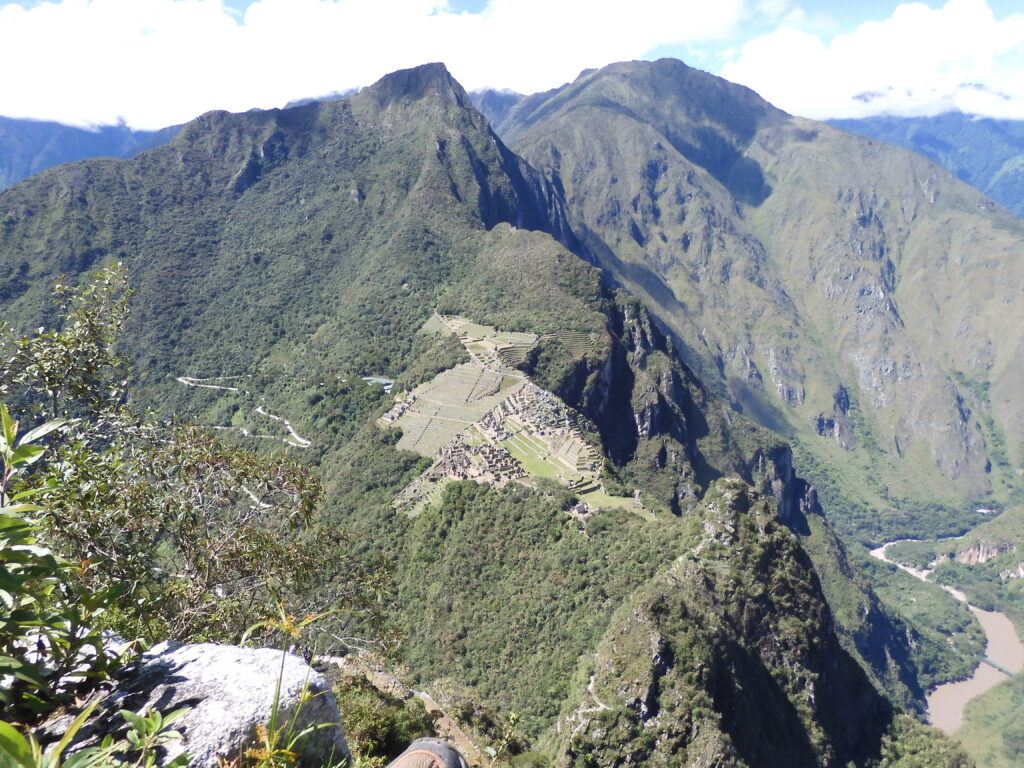
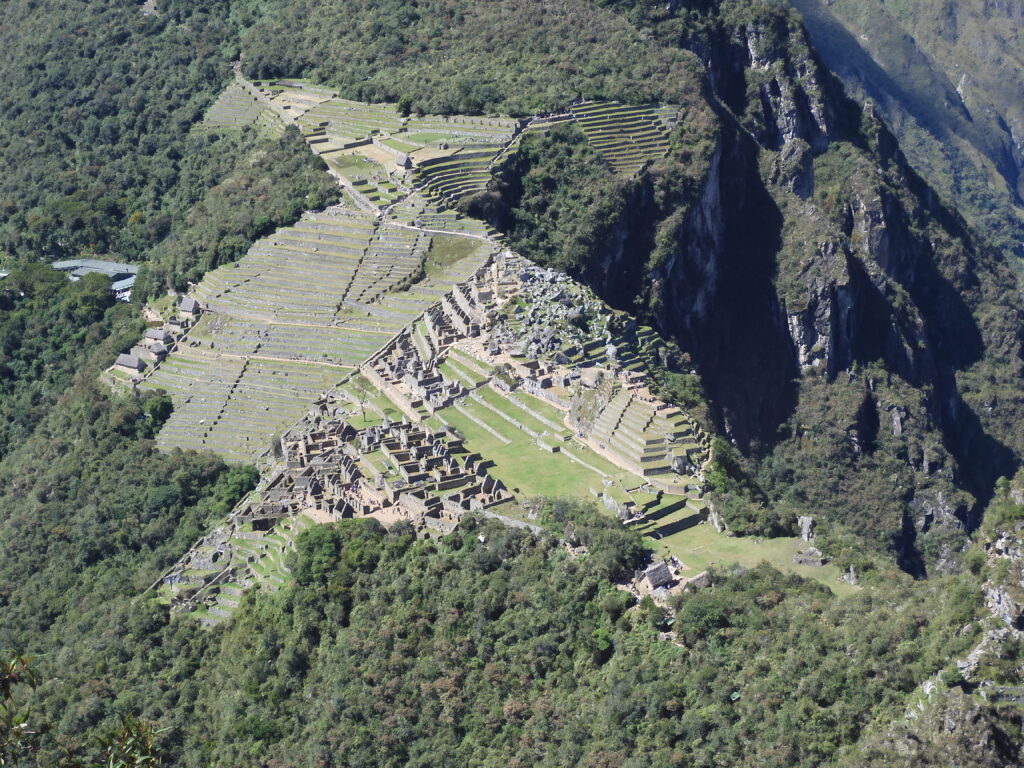
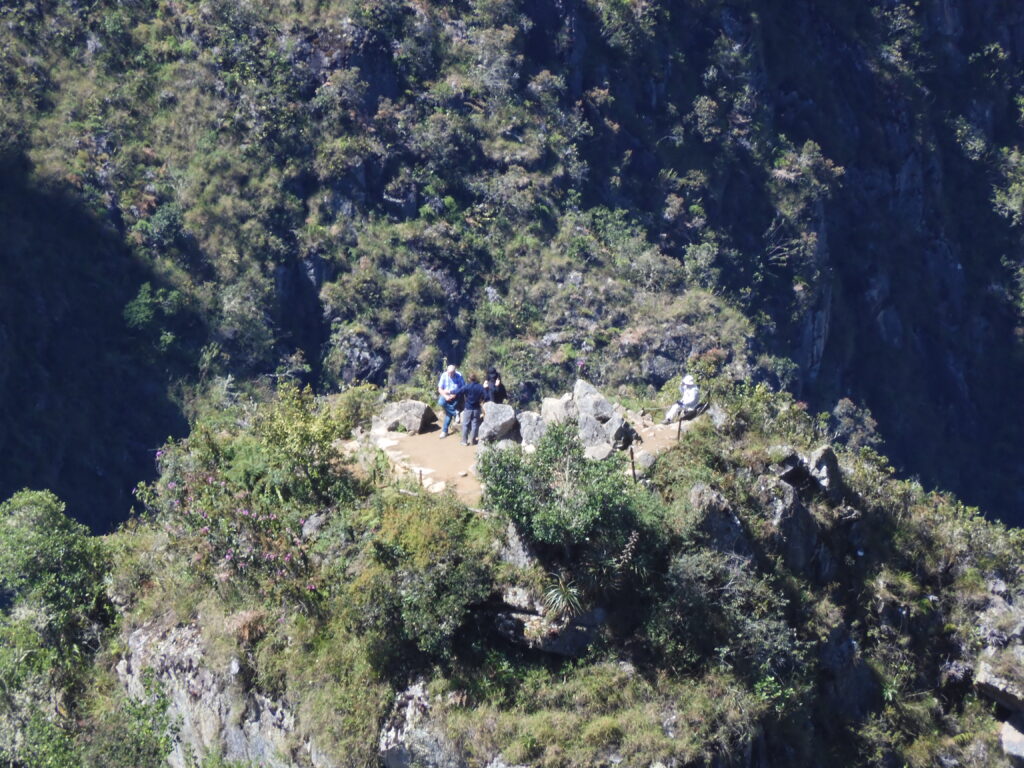
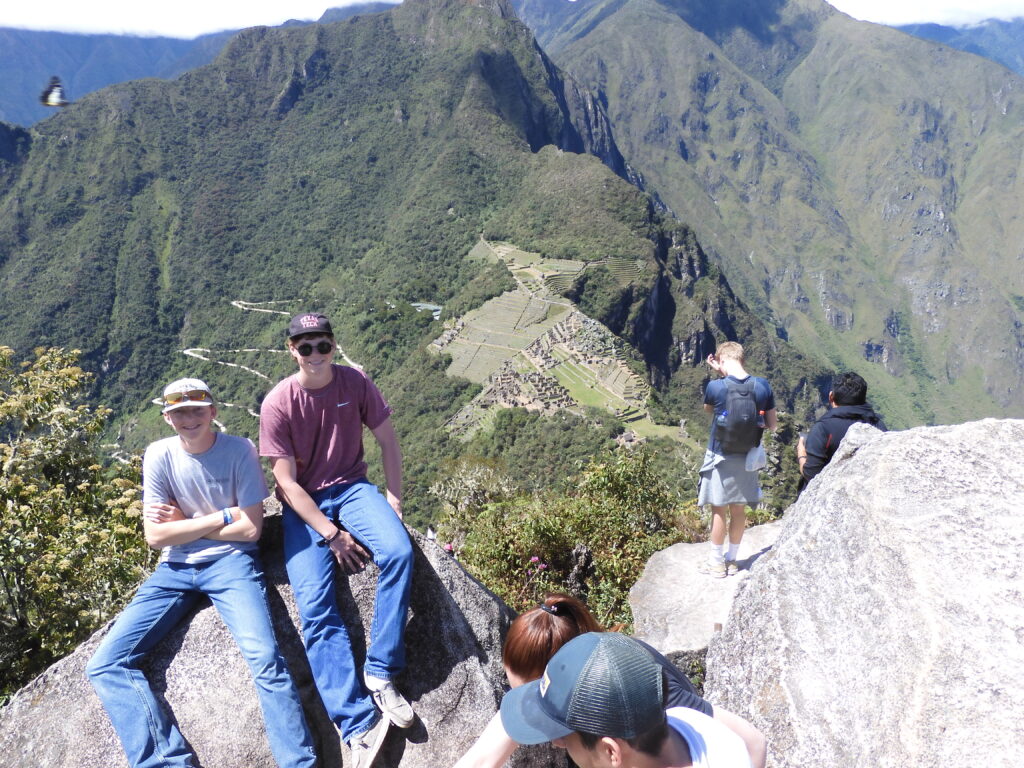
Dad was sitting on the stones at near the trail entry checkpoint as we completed our descent. Near the entry, there are a snack bar and an overpriced buffet. We paid our $44 apiece for the rather bland buffet, and rested at our table until dad felt game for another round of Machu Picchu explorations. While he made a final pit stop, I found an Australian couple negotiating with a guide for a spin around circuit #2. Research led me to believe this was the most ideal path for maximizing our time in the citadel itself. We asked if we could build a group, and four University of Cincinnati students later, we were off with our guide for about 2 ½ hours.
In my experience, about 90% of Cusquenos claim to be tour guides. As in Chichen Itza and many other popular Latin American tourist destinations, guides aggressively promote their services all around the entrances to these facilities. There does not seem to be any sort of board certification for these positions. All it takes is a polo shirt and a badge inside a plastic cover on a neck lanyard. We quickly learned that some “guides” did not understand the rudiments of agriculture or astronomy (when explaining sites that were significant for those reasons), and some could not even identify the century in which the Spanish arrived to defeat the Incas. As a general rule, I try to only hire guides who appear to know more than me about the subject area. As time went by, I began to engage prospective guides in casual conversation in which I attempted to ascertain their knowledge of at least some basic facts I knew to be true about their subject. This helped thin the herd somewhat, and made my frustration level significantly lower. In this case, our guide was quite knowledgeable. She was patient and did not attempt to rush us through. We would recommend Sacred Stone to anyone returning.
The city itself is everything one could imagine and more. It can be a bit busy, but the Peruvian Ministry of Culture limits the number of tickets sold on a given day, and those are distributed by entry times. The numbers don’t really get out of hand. Some visitors, like us, hold more than one ticket. Machu Picchu, like the Inca Empire as a whole, was a short lived civilization. The entire Inca Empire from their rapid expansion to an area that spanned from Ecuador in the North to Chile in the South – to their downfall at the hands of Pizarro and the Spanish lasted only about a century. In that light, it is all the more impressive that they were able to construct cities of this size, and of such intricate construction. The Incas had no written language and the artwork adorning their structures was not as intricate as you find in the major Mayan cities. It is the stonework set alongside such magnificent physical geography that puts Machu Picchu in a class by itself.
We sauntered back to the cafes and the bus stop after a long day of hikes and climbs. It was only mid-afternoon, but we still had to traverse two busses, a train, and an Uber to get back to our room in Cusco. It was past 11:00 by the time we made it back. We all agreed that Wednesday would be an ad hoc exploration day. I knew the boys would sleep, and I suspected my dad would need some rest as well. We drifted off to a well-earned sleep, with our primary objective for the trip having been accomplished, but plenty of other sites to see around the Sacred Valley.
